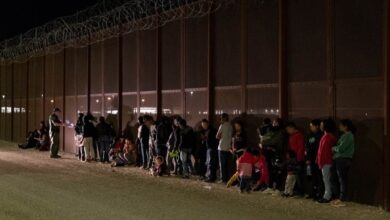The Megaprojects that Will Change the Face of Latin America in 2023
The region, whose growth has been consistent and stable in the last decade, is faced with planning, carrying out and finishing large infrastructure works that will help improve the quality of life of the inhabitants, in addition to becoming synonymous with architectural innovation, engineering and sustainable development.

Photo: Pexels
LatinAmerican Post | David García Pedraza
Listen to this article
Leer en español: Los megaproyectos que cambiarán la cara de América Latina en 2023
Latin America is a region of many economic, political, cultural, and geographical contrasts, among others. Above all, these last two are striking for setting challenges, innovating and being avant-garde when it comes to materializing a megaproject. These usually have the purpose of improving the quality of life of the population, creating jobs, increasing the positive image of a country in order to increase the investment capacity and obtain the maximum benefit from the trust of the multinationals that bet on each idea.
Fostering trade, bringing populations together, safeguarding natural resources, even challenging human ingenuity, are characteristics of some of the great works that are in the planning and execution phase throughout the Hispanic region of the continent. Here you can learn more about the five most ambitious megaprojects in this part of the world.
Grow After the Pandemic
Peru is betting on economic reactivation through the construction of four shopping centers simultaneously in Lima, the capital. With an investment of more than 700 million dollars, the districts of La Molina, San Martín de Porres and San Juan de Lurigancho will be the towns that will benefit most from this megaproject, whose purpose is to motivate the Peruvian population to learn about and acquire goods to improve the economic flow of the South American nation.
Also read: How Is Prodata Energy? the Venezuelan Company that Will Be Able to Supply Gas to Colombia
In the specific case of the "Mall Aventura" shopping center, in San Juan de Lurigancho, it will be the first of its kind in this district. With 60,000 square meters dedicated to commerce, it is estimated that 1.7 million people per year visit it since its inauguration scheduled for August 2023.
Connecting Societies
In Mexico, since 2018, what will be one of the largest connectors in the south of that country is being managed: the Mayan Train. It will pass through the States of Campeche, Chiapas, Quintana Roo, Tabasco and Yucatán, it will not only serve to transport people, but also to promote tourism and be a means of transporting cargo.
Starting from Chiapas and ending in Cancun, it is estimated that in December 2023 the two lines that are under construction and that are 1.5 kilometers long will be formally inaugurated.
150 billion Mexican pesos would be what this megaproject would ultimately cost in the Aztec nation. It is a financing that has had the support of a tax dedicated to tourism, as well as other money destined for other projects, but that are not a priority and that have been diverted to contribute to the construction of this railway.
On the other hand, the long-awaited Bogotá metro began construction in the midst of the pandemic, in October 2020. It is estimated that the first line of this means of transport will be in 2028, despite the fact that the delivery date is still far away. 2023 will be crucial for the correct schedule of the project as a consequence of the front that must be made to the inflation that the coffee country is going through.
This project, which survived great financing debates and how it would be carried out (it was decided that the first line would be raised), after 60 years its materialization is becoming a reality.
Of the 563 billion Colombian pesos that the construction of the first line will cost, the national government promised to contribute 70% of this amount, while the remaining 30% is assumed by the district government.
Public opinion is optimistic despite the mobility chaos generated by the construction of this transport work. In addition, the second line, which already has feasibility studies since 2021, is expected to be underground.
A Little Giant is Slowly Born
A proposal is gaining strength in Colombia with the interest that the national government has shown in decentralizing the country of Bogotá and turning it into a country of regions.
The Pacific – Orinoquía corridor has taken the total interest of the presidency of Gustavo Petro, whose purpose is to unite these two regions that are very far apart given the geographical conditions of the country, as they are separated by the Andes mountain range.
The cities of Buenaventura, on the Pacific Coast, and Puerto Carreño, on the border between Colombia and Venezuela, would be the limits of this work, which still does not have a serious financing and planning study, a debate that will take place in 2023. However, it is envisioned as a corridor that will be 1,490 km long and will have an electric railway line solely for cargo.
Environment and Innovation
Hidroituango has become the most innovative project in terms of development, environment, and sustainability in Colombia. Located in the northwest of the country, this innovative work is intended to be a hydroelectric figure for the department of Antioquia and contribute to the progress of this region and the country in general. It will be the largest and most productive construction of its kind in the nation.
Despite the fact that it was expected to be inaugurated in 2018, due to various geological problems, landslides and investigations by control entities, this project is still under construction and its proportion of national development has not been spared when it is finally delivered.
However, last November, two of the eight turbines that this project would have were activated, and it is expected that two more will be activated in 2023, thus being at 50% of its total operation. Its power is estimated to be 2,400 megawatts as all eight turbines are running.
To date, this project has been almost 90% built with an investment of 13.6 billion Colombian pesos.
One region, a motivation to excel that unites the countries in common and the same issue: 2023 will be a decisive year for this part of the world to be a key benchmark for progress, development, and innovation.





